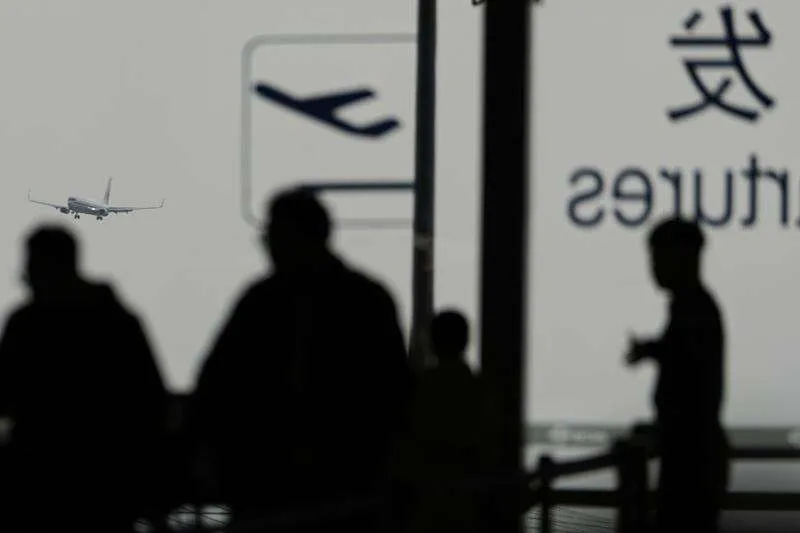Gale Warning Issued as Strong Winds Disrupt Social and Travel Life in Beijing
In a dramatic turn of events, Beijing is currently facing severe weather conditions characterized by high winds and sandstorms, leading to extensive cancellations of flights and the closure of key sites across the city. Residents and travelers alike are grappling with the impacts of these weather disturbances as authorities issue gale warnings to ensure public safety.
Flight Cancellations Reach the Hundreds
The strength of the winds, exceeding 60 km/h (approximately 37 mph), has prompted Beijing Capital International Airport to cancel more than 500 flights within a 24-hour period. Major airlines, responding to the unfavorable weather, are re-routing flights and providing options for refunds or rebooking to affected travelers. The chaos at the airport has left many passengers stranded, as long queues snake through terminals and overhead screens flash disheartening messages of delays and cancellations.
Additionally, a large number of international flights have been impacted, affecting not only domestic travel but also international connections. Families looking to reunite or tourists eager to explore the city have found themselves caught in an unexpected predicament, highlighting the significant impact of natural disturbances on travel plans.
Impact on Public Life
Beijing’s residents are being urged to exercise caution as the winds whip through the city, with authorities recommending that people stay indoors whenever possible. This advice is particularly important following reports of sporadic damage throughout the city, including fallen trees and debris, which pose risks to pedestrians and vehicles alike.
Moreover, iconic parks and public spaces that define Beijing’s cultural landscape, such as the Forbidden City and the Summer Palace, have made the difficult decision to close their gates to the public. These closures not only affect tourists but also local families and individuals who frequent these areas for leisure and recreation. Authorities aim to prevent any potential accidents or injuries caused by falling branches or flying debris, prioritizing safety during these turbulent weather conditions.
Sandstorms Make Matters Worse
The combination of high winds and dry conditions has led to the inevitable rise of sandstorms sweeping through Beijing and surrounding regions. Air quality has dramatically declined, raising concerns for vulnerable populations, including children, the elderly, and those with pre-existing respiratory conditions. Residents are being advised to wear masks when heading outdoors, and many have taken to social media to voice their frustrations over the persistent dust clouds and the unanticipated allergy flare-ups resulting from the weather.
Government Response and Preparations
The Beijing Municipal Government has activated its emergency response plan to mitigate the effects of strong winds and dust storms. Public services are directed toward monitoring the situation closely, providing updates and resources to residents through official channels. Weather forecasts are being diligently tracked, with officials working alongside meteorological agencies to predict the duration and intensity of the gusty conditions.
Additionally, emergency teams have been dispatched to address reports of property damage and to assist anyone affected directly by the weather. Firefighters and police units are on heightened alert to respond to incidents, and public service announcements are disseminated via local media to keep the public informed about safety protocols.
Long-Term Climate Concerns
This recent weather event reopens discussions surrounding climate change and its persistent impact on urban centers like Beijing. Experts emphasize that the frequency of extreme weather patterns, including severe wind storms and sandstorms, pose long-term risks to the city’s infrastructure and health outcomes. Urban planners and environmental officials are called to develop more resilient strategies to protect the city against such occurrences in the future.
As climate change continues to escalate, the changing face of catastrophic weather will likely require cities worldwide to rethink their disaster preparedness. Beijing is not alone in facing these issues, grappling with the implications of a warming planet and increasingly erratic weather patterns.
Public Sentiment and Adaptation
The public sentiment amidst this gale warning has been mixed, with many expressing both concern and resignation to the realities of living in a climate-affected world. Social media has become a platform for residents to share their experiences, from navigating the disrupted public transport systems to coping with hefty ticket fees related to flight cancellations.
Many are turning their frustrations into proactive discussions, urging local authorities to invest in better climate resilience measures for the future and more efficient communication systems to keep the public informed. The interruptions in their daily lives have sparked a sense of community, with neighbors coming together to check on one another and share resources.
The Road Ahead
As the winds continue to blow across the Chinese capital, residents remain hopeful for a swift return to normalcy. Meteorologists predict that conditions will begin to stabilize within the next few days, allowing life in Beijing to resume its usual rhythm.
However, the lessons learned from this weather event will linger in the heart of the community, serving as a reminder of the unpredictability of nature and the pressing need for cities to evolve in the face of climate challenges. The focus now shifts from immediate response to long-term strategies that prioritize safety and sustainability for all Beijing’s residents.
In Conclusion
The situation in Beijing is a stark reminder of the power of nature and the importance of preparedness. As residents navigate the disruptions caused by severe weather, cooperation and adaptability are paramount. The current gale warning highlights both the threats posed by extreme weather conditions and the resilience shown by communities in times of crisis.
Residents are encouraged to stay updated on weather warnings and take necessary precautions while officials work to restore normalcy and prevent future disruptions caused by climate-induced events.







